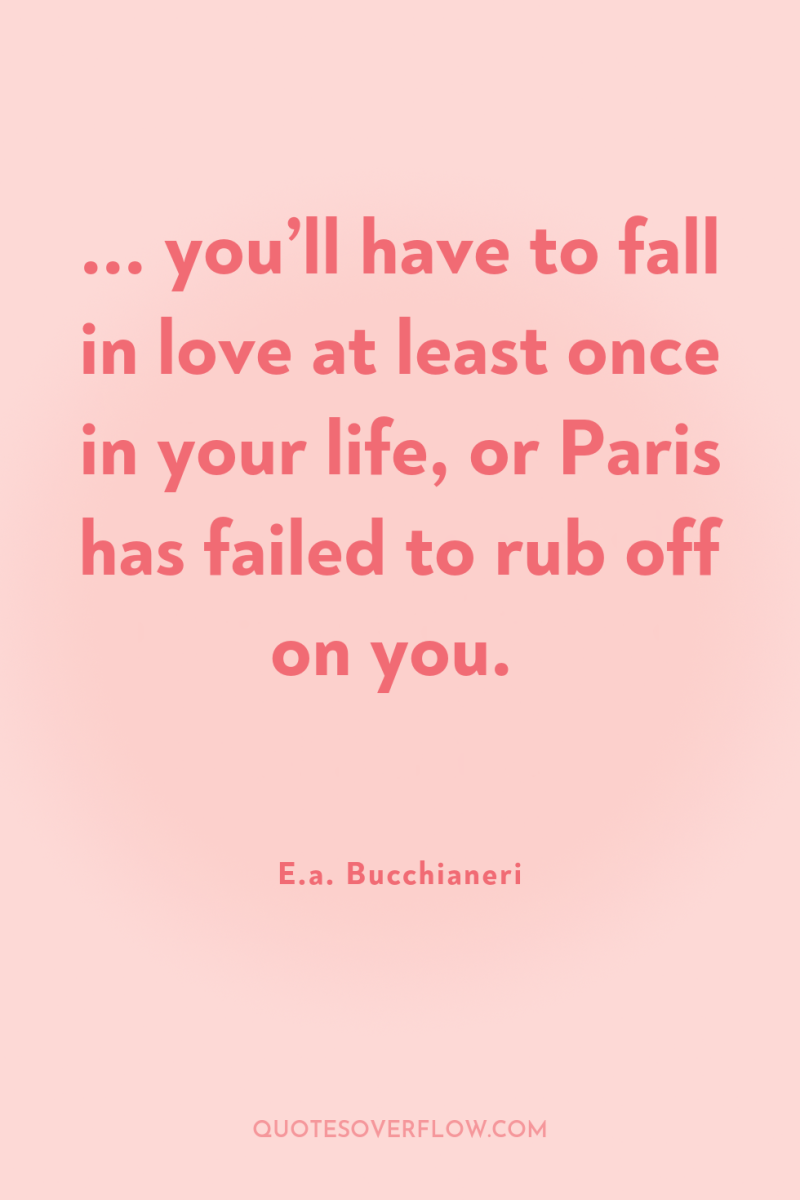
1
... you’ll have to fall in love at least once in your life, or Paris has failed to rub off on you.E.a. Bucchianeri
2
When Hitler marched across the RhineTo take the land of France, La dame de fer decided, ‘ Let’s make the tyrant dance.’ Let him take the land and city, The hills and every flower, One thing he will never have, The elegant Eiffel Tower.The French cut the cables, The elevators stood still, ‘ If he wants to reach the top, Let him walk it, if he will.’ The invaders hung a swastika The largest ever seen. But a fresh breeze blew And away it flew, Never more to be seen. They hung up a second mark, Smaller than the first, But a patriot climbed With a thought in mind:‘ Never your duty shirk.’ Up the iron lady He stealthily made his way, Hanging the bright tricolour, He heroically saved the day. Then, for some strange reason, A mystery to this day, Hitler never climbed the tower, On the ground he had to stay. At last he ordered she be razed Down to a twisted pile. A futile attack, for still she stands Beaming her metallic smile.E.a. Bucchianeri
3
Finding a taxi, she felt like a child pressing her nose to the window of a candy store as she watched the changing vista pass by while the twilight descended and the capital became bathed in a translucent misty lavender glow. Entering the city from that airport was truly unique. Charles de Gaulle, built nineteen miles north of the bustling metropolis, ensured that the final point of destination was veiled from the eyes of the traveller as they descended. No doubt, the officials scrupulously planned the airport’s location to prevent the incessant air traffic and roaring engines from visibly or audibly polluting the ambience of their beloved capital, and apparently, they succeeded. If one flew over during the summer months, the visitor would be visibly presented with beautifully managed quilt-like fields of alternating gold and green appearing as though they were tilled and clipped with the mathematical precision of a slide rule. The countryside was dotted with quaint villages and towns that were obviously under meticulous planning control. When the aircraft began to descend, this prevailing sense of exactitude and order made the visitor long for an aerial view of the capital city and its famous wonders, hoping they could see as many landmarks as they could before they touched ground, as was the usual case with other major international airports, but from this point of entry, one was denied a glimpse of the city below. Green fields, villages, more fields, the ground grew closer and closer, a runway appeared, a slight bump or two was felt as the craft landed, and they were surrounded by the steel and glass buildings of the airport. Slightly disappointed with this mysterious game of hide-and-seek, the voyager must continue on and collect their baggage, consoled by the reflection that they will see the metropolis as they make their way into town. For those travelling by road, the concrete motorway with its blue road signs, the underpasses and the typical traffic-logged hubbub of industrial areas were the first landmarks to greet the eye, without a doubt, it was a disheartening first impression. Then, the real introduction began. Quietly, and almost imperceptibly, the modern confusion of steel and asphalt was effaced little by little as the exquisite timelessness of Parisian heritage architecture was gradually unveiled. Popping up like mushrooms were cream sandstone edifices filigreed with curled, swirling carvings, gently sloping mansard roofs, elegant ironwork lanterns and wood doors that charmed the eye, until finally, the traveller was completely submerged in the glory of the Second Empire ala Baron Haussmann’s master plan of city design, the iconic grand mansions, tree-lined boulevards and avenues, the quaint gardens, the majestic churches with their towers and spires, the shops and cafés with their colourful awnings, all crowded and nestled together like jewels encrusted on a gold setting. .E.a. Bucchianeri